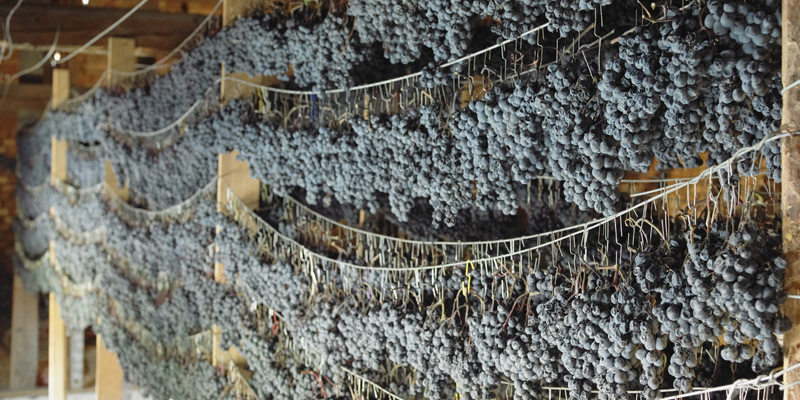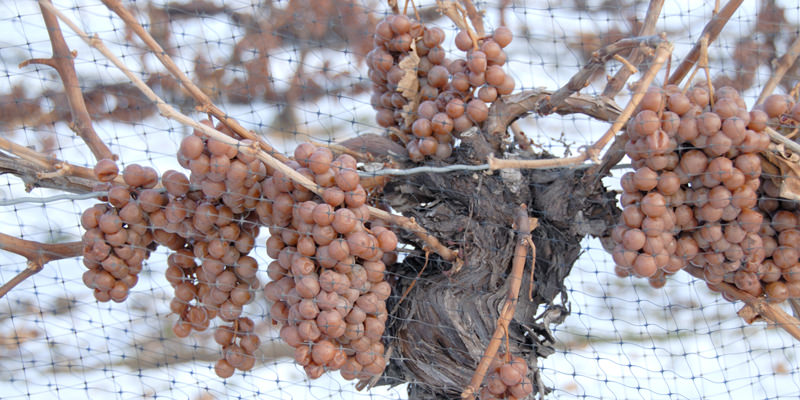Ever wonder how that German Riesling or tawny port you’re sipping got to the level of sweetness that it did? Hint: the winemakers didn’t just dump spoonfuls of sugar into the base wine and give it a quick stir. Sweet wines, which have had an unnecessarily negative connotation attached to them for a while, are finally starting to make a comeback. While there is a plethora of sweet wines out there from an abundance of grapes and regions, simplifying the process of how they got that way into four simple categories will make understanding your dessert beverage a lot easier. Whether it’s Sauternes, Madeira or Riesling, we’ve got an answer as to how that special, sugary bottle obtained its flavor profile.
Fortification
Some of the greatest dessert wines in the world, Port being one of them, get their sweetness from fortification. Simply put, fortification is the process of adding a distilled spirit, generally brandy, to the base wine; at what point the distilled spirit is added will determine the effect. Notable examples of fortified wines include Port, Madeira, Sherry, and vin doux naturels, specifically Banyuls, Rivesaltes, and Muscat de Beaumes-de-Venise.
When the distilled spirit is added before fermentation is finished, the high alcohol in the distilled spirit will kill the fermenting yeast in the base wine, leaving behind unfermented residual sugar. (Port is an example of wine that undergoes fortification prior to fermentation being complete.) However, keep in mind that not all fortified wines are sweet. In Sherry production, for example, the distilled spirit is added toward the end of fermentation, resulting in a drier product.
Botrytis
We know what you’re thinking — what the hell does that mean? Believe it or not, botrytis cinerea is the greatest mold you’ll ever get your hands on. Moldy wine? Gross. True, but moldy grapes? Potentially ah-ma-zing. Some of the best dessert wines in the world, including Sauternes from Bordeaux, Tokaji Aszu from Hungary and German Trockenbeerenauslese (we know, don’t even try saying it out loud) are created with botrytis-infected grapes. Basically, the mold on the grapes drains the water from them, leaving behind concentrated flavors of honeyed stone fruit for the future wine. Botrytis is one finicky fungus, though; too damp and it will cause gray rot, the type of mold that murders vineyards. Botyrtis thrives in misty morning conditions, generally near bodies of water. One must be patient for its noble rot, though — the grapes are generally late-harvested to allow time for the mold to grow.
Ice Wine
Ice wine, most commonly found in Canada and Germany (locally referred to as eiswein) packs a hefty punch of sweetness — and a hefty price tag at that, given the rigorous circumstances it takes to produce this type of dessert wine. The grapes are harvested at extremely low temperatures when they are still frozen on the vines. In sub-zero conditions, the water freezes yet the sugars do not, creating a higher concentration of sugar in the potential must. The key here is that the grapes are frozen prior to fermentation, not after, and must be “clean” — in other words, not infected with botrytis. Yields are tiny and vintages are unpredictable, making this wine both very highly in demand and very high in price.
Straw Wine
When thinking of straw wine, you’re better off envisioning raisins, not actual straws. straw wine production consists of leaving the grapes out to dry, essentially dehydrating the life out of them. With the loss of water comes a concentration of sugar — think eiswein methods applied to hotter locales. Many producers pick the grapes in clusters and dry them on straw mats in the sun (this process is called appassimento,) or hang them on roofs or racks to let them dehydrate. Popular examples of these exquisite dessert wines include Vin Santo from Tuscany and Recioto from the Veneto. Reciotos that complete their fermentation leaving behind no residual sugar are otherwise known as Amarone, the big spicy reds that one generally knocks back at the end of a meal with a cigar. Again, low yields and lots of intense work leave these finished straw wines with a hefty price tag. No one ever said being sweet comes easy.




